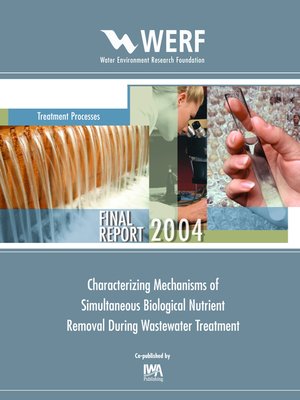Characterizing Mechanisms of Simultaneous Biological Nutrient Removal During Wastewater Treatment
ebook ∣ WERF Research Report
By P. F. Strom

Sign up to save your library
With an OverDrive account, you can save your favorite libraries for at-a-glance information about availability. Find out more about OverDrive accounts.
Find this title in Libby, the library reading app by OverDrive.



Search for a digital library with this title
Title found at these libraries:
| Library Name | Distance |
|---|---|
| Loading... |
Simultaneous biological nutrient removal (SBNR) is the removal of nitrogen and/or phosphorus in excess of that required for biomass synthesis in biological wastewater treatment systems where there are no defined anaerobic and/or anoxic zones. The hypothesis is that one or more of three mechanisms is responsible within individual systems: variations in the bioreactor macroenvironment created by the mixing pattern, gradients within the floc microenvironment, and/or novel microorganism activity. Understanding of the mechanisms of SBNR can be expected to lead to improved efficiency and reliability in its application. Preliminary work documented SBNR in 7 full-scale OrbalTM closed loop bioreactors. A batch assay demonstrated that novel microorganism activity was of little importance in SBNR at the three plants tested. While the floc microenvironment likely plays an important role in nitrogen removal in such plants, it cannot explain phosphorus removal. A computational fluid dynamics (CFD) model was developed to elucidate the role of the bioreactor macroenvironment in SBNR. This is the first reported application of CFD to activated sludge biological wastewater treatment. Although the software and computational requirements limited model complexity, it still simulated the creation of dissolved oxygen gradients within the system, demonstrating that the anaerobic zones required for SBNR could occur.







